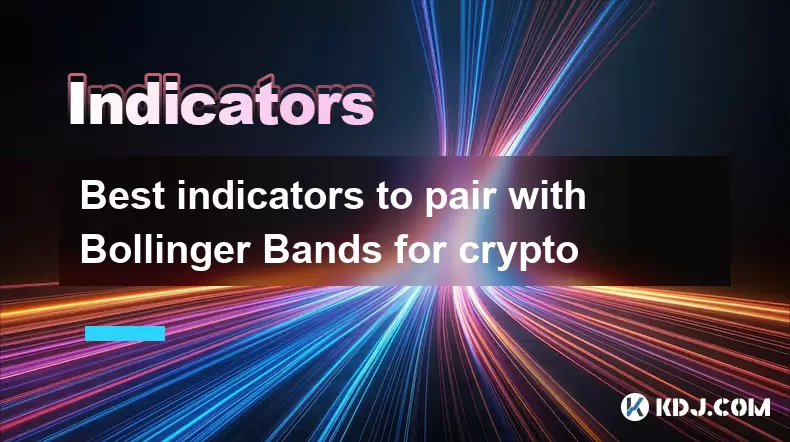-
 Bitcoin
Bitcoin $120400
1.77% -
 Ethereum
Ethereum $3615
7.90% -
 XRP
XRP $3.580
17.84% -
 Tether USDt
Tether USDt $1.001
0.06% -
 BNB
BNB $729.4
1.25% -
 Solana
Solana $179.9
5.04% -
 USDC
USDC $0.0000
0.01% -
 Dogecoin
Dogecoin $0.2311
8.22% -
 TRON
TRON $0.3226
4.04% -
 Cardano
Cardano $0.8490
12.85% -
 Hyperliquid
Hyperliquid $46.45
0.72% -
 Stellar
Stellar $0.4913
8.54% -
 Sui
Sui $4.027
2.00% -
 Chainlink
Chainlink $18.51
11.67% -
 Hedera
Hedera $0.2818
21.51% -
 Avalanche
Avalanche $24.03
7.40% -
 Bitcoin Cash
Bitcoin Cash $508.5
2.90% -
 Shiba Inu
Shiba Inu $0.00001496
3.24% -
 UNUS SED LEO
UNUS SED LEO $8.961
1.83% -
 Toncoin
Toncoin $3.264
3.13% -
 Litecoin
Litecoin $104.6
8.15% -
 Polkadot
Polkadot $4.389
6.11% -
 Uniswap
Uniswap $9.924
10.63% -
 Monero
Monero $337.9
0.49% -
 Pepe
Pepe $0.00001376
2.79% -
 Bitget Token
Bitget Token $4.830
2.46% -
 Ethena USDe
Ethena USDe $1.001
0.05% -
 Dai
Dai $1.000
0.02% -
 Aave
Aave $325.2
1.66% -
 Bittensor
Bittensor $423.7
-0.85%
Best indicators to pair with Bollinger Bands for crypto
Bollinger Bands, when combined with RSI, MACD, or volume indicators like OBV, offer crypto traders more reliable signals by filtering false breakouts and confirming trend strength in volatile markets.
Jul 16, 2025 at 08:28 am

Understanding Bollinger Bands in the Crypto Market
Bollinger Bands, developed by John Bollinger, are a popular technical analysis tool used to measure market volatility. They consist of a middle moving average (typically 20-period simple moving average) and two outer bands that represent standard deviations above and below the middle line. In the cryptocurrency market, where price swings are frequent and often intense, Bollinger Bands help traders identify overbought or oversold conditions.
When prices touch or move outside the upper band, it may signal an overbought condition, suggesting a potential reversal or pullback. Conversely, when prices hit or fall below the lower band, it could indicate an oversold situation, possibly signaling a bounce. However, relying solely on Bollinger Bands can lead to false signals due to the high volatility inherent in crypto assets.
Moving Average Convergence Divergence (MACD)
One of the most effective indicators to pair with Bollinger Bands is the MACD (Moving Average Convergence Divergence). The MACD helps confirm trend direction and momentum by analyzing the relationship between two moving averages — typically the 12-period and 26-period exponential moving averages (EMA).
- The MACD line is calculated by subtracting the 26-period EMA from the 12-period EMA.
- A signal line, usually a 9-period EMA of the MACD line, is plotted alongside it.
- The histogram shows the difference between the MACD line and the signal line.
When using this in combination with Bollinger Bands:
- If price touches the upper Bollinger Band and the MACD line crosses below the signal line, it could be a bearish confirmation.
- Similarly, if price hits the lower band and the MACD line crosses above the signal line, it might indicate a bullish reversal.
This pairing helps filter out false breakouts and enhances trade accuracy in volatile crypto markets.
Relative Strength Index (RSI)
The Relative Strength Index (RSI) is another powerful indicator that complements Bollinger Bands well. RSI measures the speed and change of price movements, typically over a 14-period setting, and oscillates between 0 and 100.
- An RSI value above 70 is considered overbought, suggesting potential weakness.
- An RSI value below 30 is deemed oversold, indicating possible strength ahead.
In crypto trading, combining RSI with Bollinger Bands provides clearer entry and exit points:
- When price reaches the upper Bollinger Band and RSI is above 70, it reinforces the overbought scenario.
- When price hits the lower band and RSI drops below 30, it supports the oversold hypothesis.
However, during strong trends, RSI can remain in overbought or oversold territory for extended periods, so using it in conjunction with Bollinger Bands helps avoid premature trades.
Volume Indicators: On-Balance Volume (OBV)
On-Balance Volume (OBV) is a volume-based indicator that adds up volume on up days and subtracts it on down days. It helps confirm price trends and detect potential reversals.
- When OBV is rising, it indicates buying pressure.
- When OBV is falling, it suggests selling pressure.
Pairing OBV with Bollinger Bands can enhance trade validation:
- If price touches the upper Bollinger Band but OBV is declining, it could signal a lack of buying interest, hinting at a possible reversal.
- Conversely, if price hits the lower band and OBV is increasing, it may suggest accumulation, pointing to a potential upward move.
Volume plays a crucial role in confirming the strength of moves in cryptocurrency trading, making OBV a valuable companion to Bollinger Bands.
Fibonacci Retracement Levels
Fibonacci retracement levels are horizontal lines that indicate areas of support or resistance based on prior price action. Common levels include 23.6%, 38.2%, 50%, 61.8%, and 78.6%.
Using Fibonacci retracements with Bollinger Bands allows traders to pinpoint potential reversal zones more precisely:
- If price approaches a key Fibonacci level near the upper Bollinger Band, and RSI is also showing overbought readings, it strengthens the case for a pullback.
- Similarly, if price reaches a major Fibonacci support level near the lower band, and volume starts to pick up, it may suggest a reversal higher.
These confluences provide stronger signals than any single indicator alone, especially in fast-moving crypto markets where timing is critical.
Frequently Asked Questions
Q: Can I use Bollinger Bands without any other indicators in crypto trading?
While Bollinger Bands can be used alone, they tend to generate false signals in highly volatile crypto environments. Combining them with other tools like RSI, MACD, or volume indicators improves decision-making and reduces the risk of entering bad trades.
Q: How do I adjust Bollinger Bands settings for different crypto timeframes?
The default setting of 20-period works well for daily charts. For shorter timeframes like 1-hour or 15-minute charts, reducing the period to 10 or 14 can make the bands more responsive. Adjusting the standard deviation multiplier (usually set at 2) can also fine-tune sensitivity.
Q: What should I do if price stays outside the Bollinger Bands for long periods?
Extended price movement beyond the bands often indicates a strong trend. In such cases, relying solely on Bollinger Bands may not be effective. Always check for confluence with other indicators like MACD or volume to determine whether the trend has staying power.
Q: Is there a specific candlestick pattern that works best with Bollinger Bands in crypto?
Yes, pin bars and engulfing patterns that form near the Bollinger Bands can act as reliable reversal signals. A bullish engulfing pattern near the lower band combined with oversold RSI increases the probability of a successful trade.
Disclaimer:info@kdj.com
The information provided is not trading advice. kdj.com does not assume any responsibility for any investments made based on the information provided in this article. Cryptocurrencies are highly volatile and it is highly recommended that you invest with caution after thorough research!
If you believe that the content used on this website infringes your copyright, please contact us immediately (info@kdj.com) and we will delete it promptly.
- Bitcoin, Cloud Mining, Crypto Wealth: Riding the Bull Run in Style
- 2025-07-18 12:30:12
- Ethereum Gas Fees, ERA Airdrop: A New Yorker's Take on Crypto Chaos
- 2025-07-18 12:50:12
- Bitcoin, Altcoins, and the Crypto Market: Navigating Trump's Crypto Ventures and the Evolving Digital Landscape
- 2025-07-18 12:50:12
- Bitcoin Holdings and the Smarter Web: A Match Made in Digital Heaven?
- 2025-07-18 12:10:12
- Bitcoin, MSTR & Saylor's Strategy: A Winning Trifecta?
- 2025-07-18 08:30:13
- Bitcoin Mortgages Down Under: A New Wave in Australian Homeownership?
- 2025-07-18 08:50:12
Related knowledge

Advanced RSI strategies for crypto
Jul 13,2025 at 11:01am
Understanding the Basics of RSI in Cryptocurrency TradingThe Relative Strength Index (RSI) is a momentum oscillator used to measure the speed and chan...

Crypto RSI for day trading
Jul 12,2025 at 11:14am
Understanding RSI in the Context of Cryptocurrency TradingThe Relative Strength Index (RSI) is a momentum oscillator used to measure the speed and cha...

Crypto RSI for scalping
Jul 12,2025 at 11:00pm
Understanding RSI in the Context of Crypto TradingThe Relative Strength Index (RSI) is a momentum oscillator widely used by traders to measure the spe...

What does an RSI of 30 mean in crypto
Jul 15,2025 at 07:07pm
Understanding RSI in Cryptocurrency TradingRelative Strength Index (RSI) is a momentum oscillator widely used in cryptocurrency trading to measure the...

What does an RSI of 70 mean in crypto
Jul 13,2025 at 06:07pm
Understanding the RSI Indicator in Cryptocurrency TradingThe Relative Strength Index (RSI) is a widely used technical analysis tool that helps traders...

Does RSI work in a bear market for crypto
Jul 16,2025 at 01:36pm
Understanding RSI in Cryptocurrency TradingThe Relative Strength Index (RSI) is a momentum oscillator used by traders to measure the speed and change ...

Advanced RSI strategies for crypto
Jul 13,2025 at 11:01am
Understanding the Basics of RSI in Cryptocurrency TradingThe Relative Strength Index (RSI) is a momentum oscillator used to measure the speed and chan...

Crypto RSI for day trading
Jul 12,2025 at 11:14am
Understanding RSI in the Context of Cryptocurrency TradingThe Relative Strength Index (RSI) is a momentum oscillator used to measure the speed and cha...

Crypto RSI for scalping
Jul 12,2025 at 11:00pm
Understanding RSI in the Context of Crypto TradingThe Relative Strength Index (RSI) is a momentum oscillator widely used by traders to measure the spe...

What does an RSI of 30 mean in crypto
Jul 15,2025 at 07:07pm
Understanding RSI in Cryptocurrency TradingRelative Strength Index (RSI) is a momentum oscillator widely used in cryptocurrency trading to measure the...

What does an RSI of 70 mean in crypto
Jul 13,2025 at 06:07pm
Understanding the RSI Indicator in Cryptocurrency TradingThe Relative Strength Index (RSI) is a widely used technical analysis tool that helps traders...

Does RSI work in a bear market for crypto
Jul 16,2025 at 01:36pm
Understanding RSI in Cryptocurrency TradingThe Relative Strength Index (RSI) is a momentum oscillator used by traders to measure the speed and change ...
See all articles

























































































